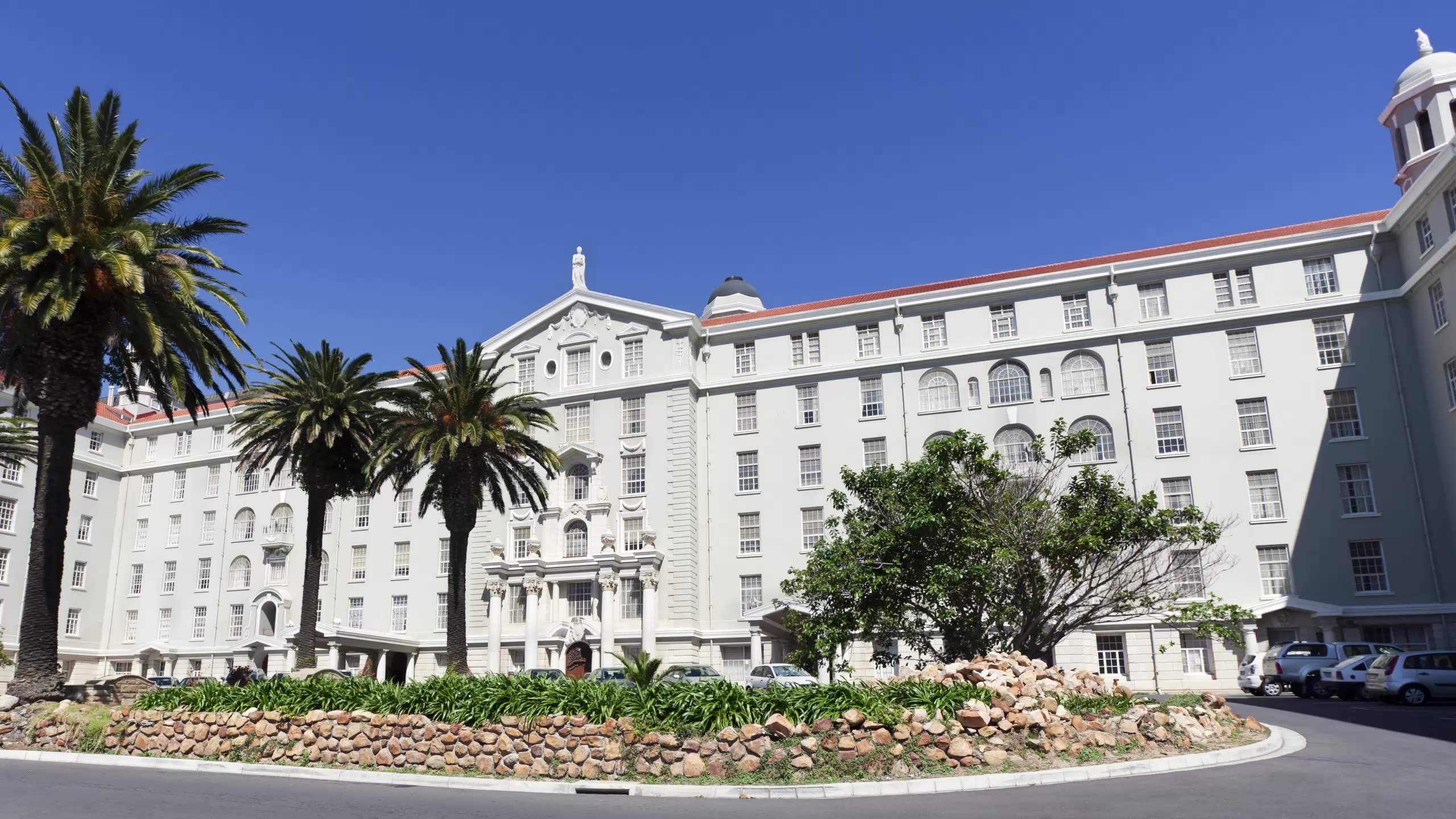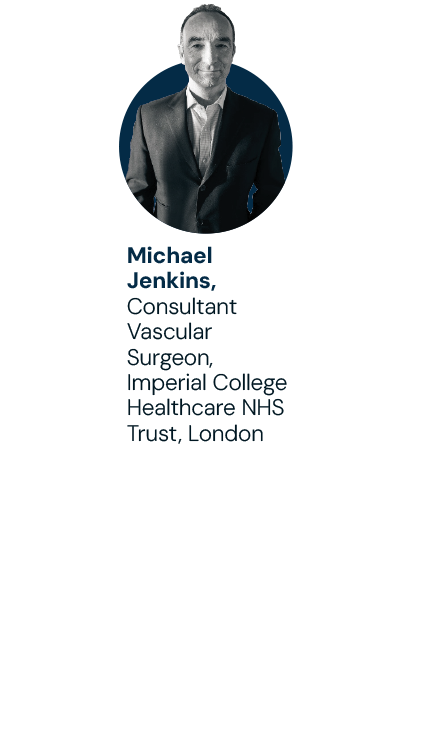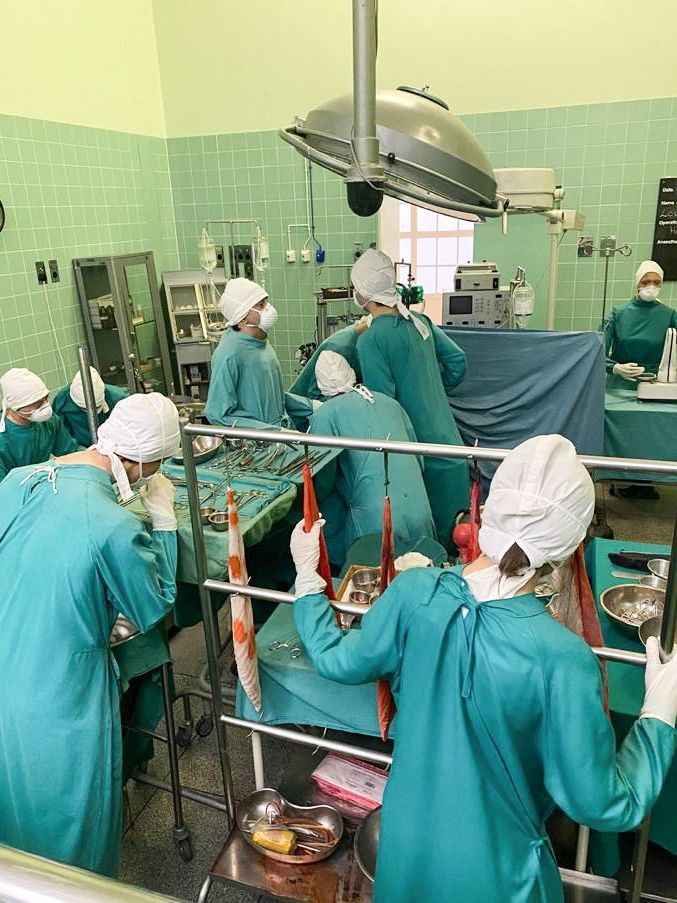Contrasts in Cape Town
The Frank Penman Memorial Foundation funds a travelling fellowship to drive medical improvement in South Africa. Michael Jenkins recounts his time as visiting professor

I was honoured and humbled to be selected as the Frank Penman Memorial Lecturer for 2024. In 1963, while on holiday in South Africa, Frank Garfield Penman, a solicitor and philanthropist, survived initial surgery for a ruptured abdominal aortic aneurysm – a testament to the skill of the surgical team at Cape Town’s Groote Schuur Hospital at that time.
Sadly, Penman did not live to leave hospital and his widow endowed a sum of money to enable visiting surgeons from the UK to travel to Cape Town to share their experience and new techniques. This tradition has continued to this day and I found it an extremely valuable experience to be able to be this year’s visiting professor.
On the ground
My first engagement was at Groote Schuur Hospital, where I met the Head of Department, Professor Lydia Cairncross, for an introduction to both the unit and my visit. I then joined a tour of the Christiaan Barnard Museum, which is housed in the old part of the hospital. Here, the original iconic theatres have been recreated to show the night of
3 December 1967, when the first heart transplant was performed.
Although Groote Schuur was my base, I also visited other outlying hospitals and enjoyed an interesting visit to the Victoria Hospital with Professor Euginio Panieri. The Victoria is a level-two hospital akin to an old-style district general hospital in the UK. There, we did a ward round and saw some fascinating pathology with both advanced disease and late presentations contriving to create some challenging operations. The patients were stoical and I was impressed with the standard of observation and record-keeping. I had forgotten quite how good hand-written records really are!
I also visited Tygerberg Hospital (located in a much poorer part of town) to meet Dr Jakkie Odendaal and Lenki, the vascular surgeons there. I joined their M&M meeting followed by a surgical MDT and then gave a lecture. A morning at the private Kingsbury Hospital with Dr Bob Baigrie allowed me to experience the private sector, which is exceptionally well equipped and appointed. Unlike in the UK, the majority of private hospitals in Cape Town provide full emergency 24-hour care with well-established subspecialty on-call rotas providing fully private care.
I enjoyed teaching the junior and more senior surgical trainees, the latter preparing to sit the FCS exams. These sessions were informal and always entertaining, mostly based around clinical cases that they presented. I also taught medical students and witnessed the difference between one group leaving surgery and the next arriving to start their rotation. As with students in the UK, there was a keenness to get certain tasks ‘signed off’.
I gave a number of lectures on different vascular aspects of trauma surgery, aortic dissection, demographic trends in vascular disease, changes following the end of the smoking era and innovation in surgery at Groote Schuur, Tygerberg and Kingsbury Hospitals, but the main academic event was the University of Cape Town Surgical Update Conference on 15-16 March. All departments presented updates in the individual specialties and then reflected on the relevance to South Africa and how any changes in practice would be adopted.
There I delivered the hour-long Penman Memorial Lecture – ‘Minimally Invasive (Vascular) Surgery – is Smaller Always Better?’ There was an audience of multiple surgical disciplines and it was essential to not get too engrossed in the purely vascular aspects, which seemed to have been appreciated. Visiting surgeons from the US also presented and reflected on the different practices in their own country. I concluded that the UK fell somewhere in the middle.
One morning, I arrived early at the Groote Schuur for a vascular list. A patient with a juxtarenal aortic abdominal aneurysm was scheduled but, after a large number of trauma admissions the night before, there were no ITU beds so the case had to be cancelled. This reminded me of my own situation at St Mary’s in London. Looking at the records, I realised that the juniors still practised ‘pre-rounds’ and I saw that Dr Keane (Vascular Surgical Registrar) had already reviewed the patient and updated the notes at 5.30 that morning. This enabled each trainee to present from the medical records a succinct update on the morning rounds with either the Fellow or Consultant.
The one positive, however, was that the lack of a bed gave me a chance to visit Table Mountain and the new area around the marina – I am very grateful to Dr Nad Naidoo for arranging this and treating me to lunch. It was my first chance to get out and about in Cape Town and I enjoyed the stunning weather and amazing views from ‘the mountain’ that dominates everything in the vicinity.
On my last day, I also took an open-top tourist bus around the periphery of the mountain, which revealed amazing seascapes to the west and the vineyards of Constantia to the east. However, there was always a reminder of the deep contrasts in South Africa, here between the luxury villas of Clifton and Camps Bay and the townships dotting the hillsides just a few miles further round the coast.
In South Africa, the volume of surgical emergency admissions is higher than anywhere in the UK
In South Africa, the volume of surgical emergency admissions is higher than anywhere in the UK
‘They ran out of bullets’
In South Africa, the volume of surgical emergency admissions is higher than anywhere in the UK. On joining the Trauma team for morning handover at 7.30, I learnt they would normally see about 150 trauma patients over a weekend. The ward round was very efficient, with different parts of the team seeing different patients across the Trauma Resus area, wards, ‘high care’ and ITU. Depending on the magnitude and acuity of the injury, they were coded red, yellow, green, etc. A large number of patients were young males with multiple gunshots. Many had chest drains and tracheostomies
in situ, but all were stoical and none complained, including a young man who had been shot 17 times – he told me he had survived only because his attackers had run out of bullets.
There was also a mature and efficient concept of an acute general surgical firm that dealt with the majority of emergencies, only passing on more complex cases to specialist firms. I joined the Acute Care team for its 7.30 handover one morning and then did ward rounds with Professor Christo Kloppers, who also did HPB surgery. We saw patients post-laparotomy, post-cholecystectomy (all performed ‘hot’) and a large volume of diabetic foot sepsis. The Vascular team took over only a small percentage of patients who were suitable for arterial reconstruction and the Acute Care team dealt with all the rest, including any amputations.
In terms of differences to the UK, in some areas it was like going back a few decades with fewer Consultants, more frequent on-call rotas and trainees and Fellows (similar to UK-style Senior Registrars from the 1980s) taking on more responsibility for the management of emergency patients. However, there were many more similarities, such as firm rivalries, a very impressive work ethic and the relatively recent phenomenon of limitations of theatre, ward and critical care capacity.
Looking back
Towards the end of my stay, I met Professor Cairncross again and we sat in her beautiful office as I had done on the day after I arrived. I fed back how impressed I was with how the hospitals ran and the teams dealt with such a large number of cases. My clinical experience there reinforced one of my own beliefs in the importance of history-taking in making a diagnosis. That was something drummed into us in medical school but, in the current climate of the ready availability of sophisticated investigations, it seems to have taken on a secondary role in the current NHS. It had a more prominent role in South Africa, which I applauded.
We laughed at some of the similarities (unexpected by me) between Cape Town and London. We discussed training and the different structure in South Africa compared with the UK. The stark difference was the limited number of Consultants in the public sector in Cape Town (which was very similar to the UK of 25 years ago) compared with the situation in the NHS today. The restricted number of Consultant appointments in the public and university sectors meant many young surgeons were forced into private practice simply because very few Consultant positions in a given subspecialty became available. I wondered if there was a way to integrate appointments more closely to combine the best of both worlds for patients and surgeons. What was clear to me is that everyone worked very hard, regardless of their sector or specialty. We discussed succession planning, particularly for the vascular unit, where the imminent retirement of a surgeon who had tolerated a 1:1 on-call rota for more than 20 years was going to mandate changes. I encouraged Professor Cairncross to lobby for vascular access to the new hybrid theatre (named after Christiaan Barnard in the cardiothoracic wing), which would help to justify the investment and provide an excellent facility for endovascular surgery.
I left Cape Town with very fond memories of all the individuals and teams I had met – it was an experience I will never forget.
Read more



